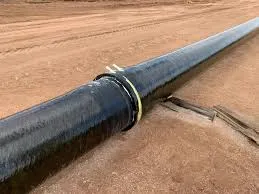
-
 Afrikaans
Afrikaans -
 Albanian
Albanian -
 Amharic
Amharic -
 Arabic
Arabic -
 Armenian
Armenian -
 Azerbaijani
Azerbaijani -
 Basque
Basque -
 Belarusian
Belarusian -
 Bengali
Bengali -
 Bosnian
Bosnian -
 Bulgarian
Bulgarian -
 Catalan
Catalan -
 Cebuano
Cebuano -
 China
China -
 China (Taiwan)
China (Taiwan) -
 Corsican
Corsican -
 Croatian
Croatian -
 Czech
Czech -
 Danish
Danish -
 Dutch
Dutch -
 English
English -
 Esperanto
Esperanto -
 Estonian
Estonian -
 Finnish
Finnish -
 French
French -
 Frisian
Frisian -
 Galician
Galician -
 Georgian
Georgian -
 German
German -
 Greek
Greek -
 Gujarati
Gujarati -
 Haitian Creole
Haitian Creole -
 hausa
hausa -
 hawaiian
hawaiian -
 Hebrew
Hebrew -
 Hindi
Hindi -
 Miao
Miao -
 Hungarian
Hungarian -
 Icelandic
Icelandic -
 igbo
igbo -
 Indonesian
Indonesian -
 irish
irish -
 Italian
Italian -
 Japanese
Japanese -
 Javanese
Javanese -
 Kannada
Kannada -
 kazakh
kazakh -
 Khmer
Khmer -
 Rwandese
Rwandese -
 Korean
Korean -
 Kurdish
Kurdish -
 Kyrgyz
Kyrgyz -
 Lao
Lao -
 Latin
Latin -
 Latvian
Latvian -
 Lithuanian
Lithuanian -
 Luxembourgish
Luxembourgish -
 Macedonian
Macedonian -
 Malgashi
Malgashi -
 Malay
Malay -
 Malayalam
Malayalam -
 Maltese
Maltese -
 Maori
Maori -
 Marathi
Marathi -
 Mongolian
Mongolian -
 Myanmar
Myanmar -
 Nepali
Nepali -
 Norwegian
Norwegian -
 Norwegian
Norwegian -
 Occitan
Occitan -
 Pashto
Pashto -
 Persian
Persian -
 Polish
Polish -
 Portuguese
Portuguese -
 Punjabi
Punjabi -
 Romanian
Romanian -
 Russian
Russian -
 Samoan
Samoan -
 Scottish Gaelic
Scottish Gaelic -
 Serbian
Serbian -
 Sesotho
Sesotho -
 Shona
Shona -
 Sindhi
Sindhi -
 Sinhala
Sinhala -
 Slovak
Slovak -
 Slovenian
Slovenian -
 Somali
Somali -
 Spanish
Spanish -
 Sundanese
Sundanese -
 Swahili
Swahili -
 Swedish
Swedish -
 Tagalog
Tagalog -
 Tajik
Tajik -
 Tamil
Tamil -
 Tatar
Tatar -
 Telugu
Telugu -
 Thai
Thai -
 Turkish
Turkish -
 Turkmen
Turkmen -
 Ukrainian
Ukrainian -
 Urdu
Urdu -
 Uighur
Uighur -
 Uzbek
Uzbek -
 Vietnamese
Vietnamese -
 Welsh
Welsh -
 Bantu
Bantu -
 Yiddish
Yiddish -
 Yoruba
Yoruba -
 Zulu
Zulu
fiberglass weir
The Importance of Fiberglass Weirs in Water Management
In the realm of water management and hydrology, weirs play a crucial role in controlling water flow, measuring stream discharge, and managing aquatic ecosystems. Among various materials used for constructing weirs, fiberglass has emerged as a material of choice due to its remarkable properties, making fiberglass weirs an essential tool for modern water management practices.
Fiberglass, a composite material made from fine glass fibers and resin, offers numerous advantages over traditional materials such as concrete and wood. One of the most significant benefits of fiberglass weirs is their lightweight nature. This characteristic not only facilitates easier transportation and installation but also reduces the load on existing structures, minimizing the risk of structural failure. As a result, fiberglass weirs can be installed in a variety of challenging environments where traditional materials might not be feasible.
Durability is another vital attribute of fiberglass weirs. They are resistant to corrosion, rot, and degradation, which are common issues with wooden and metal weirs when exposed to prolonged contact with water. This durability translates to lower maintenance costs and a longer lifespan, making fiberglass weirs a cost-effective solution in the long term. Furthermore, the chemical resistance of fiberglass allows it to withstand harsh environments, such as those found in industrial settings or areas with high levels of pollutants.
fiberglass weir

In addition to their practical advantages, fiberglass weirs can be designed in various configurations and sizes to meet specific needs. Their versatility allows for custom solutions tailored to different water flow conditions and environmental requirements. Whether used for controlling runoff in urban areas, monitoring river flow, or conducting scientific research, fiberglass weirs can be adapted to suit a wide range of applications.
Environmentally, fiberglass weirs can help maintain ecological balance. Controlling water levels and flow patterns can support local wildlife and plants, preventing flooding and soil erosion. By effectively managing water resources, fiberglass weirs contribute to sustainable development, particularly in regions facing water scarcity or flooding challenges.
Another noteworthy aspect is the ease of integration with modern technology. Many fiberglass weir designs can incorporate sensors and monitoring devices, allowing for real-time data collection on water levels and flow rates. This technological synergy not only enhances water management practices but also promotes better decision-making by providing crucial data for analysis.
In conclusion, fiberglass weirs represent a significant advancement in water management solutions. Their lightweight, durable, and corrosion-resistant properties, coupled with their versatility and capacity for modern technological integration, make them an indispensable tool in addressing contemporary water management challenges. As communities around the globe continue to face issues related to water scarcity, flooding, and environmental degradation, the adoption of innovative and effective solutions like fiberglass weirs will be essential for promoting sustainable water management practices. By choosing fiberglass weirs, we can achieve more resilient ecosystems and ensure the responsible stewardship of our precious water resources.
Latest news
-
Exploring the Benefits of Top Hammer Drifter Rods for Enhanced Drilling PerformanceNewsJun.10,2025
-
High-Precision Fiberglass Winding Machine for GRP/FRP Pipe Production – Reliable & Efficient SolutionsNewsJun.10,2025
-
FRP Pipes & Fittings for Shipbuilding - Corrosion-Resistant & LightweightNewsJun.09,2025
-
Premium FRP Flooring Solutions Durable & Slip-ResistantNewsJun.09,2025
-
Premium Fiberglass Rectangular Tanks Durable & Lightweight SolutionNewsJun.09,2025
-
Tapered Drill String Design Guide Durable Performance & UsesNewsJun.09,2025









